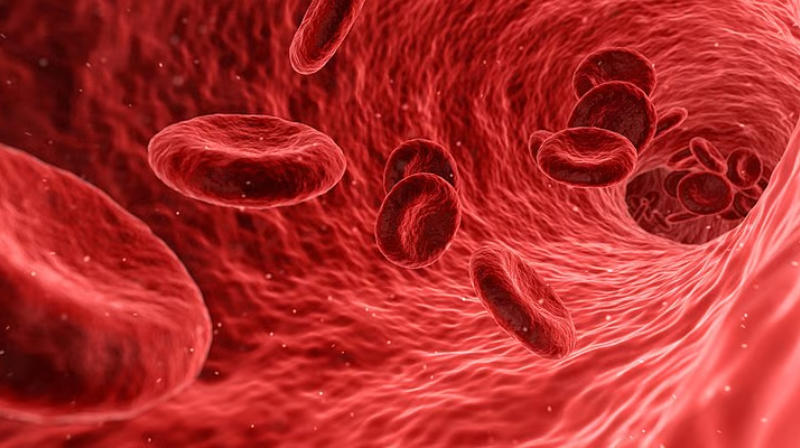A patient with beta thalassemia or sickle cell disease—genetic disorders that affect the blood protein hemoglobin in red blood cells—currently has only two options for treatment. They can medicate the diseases’ many lifelong symptoms, or they can undergo a curative bone marrow transplant.
Now, new research from St. Jude Children’s Research Hospital in Memphis, Tenneesee, opens the door to another possibility: the use of proline hydroxylase inhibitor roxadustat, a drug developed by Fibrogen and AstraZeneca that’s currently under late-stage investigation for treating anemia in chronic kidney disease, to produce healthy hemoglobin. In the results of a study published Oct. 12 in Nature, the scientists described how they used the drug to reverse cell sickling in red blood cells from patients with sickle cell disease.
To understand how the drugs could benefit sickle cell and beta thalassemia patients, it helps to know a little bit about hemoglobin and how it develops. Hemoglobin’s job is to latch on to oxygen so red blood cells can carry it around the body. Fetal hemoglobin, or HbF, contains two “alpha” subunits and two “gamma” subunits. The gamma subunits are replaced by “beta” subunits soon after birth.
That’s where the trouble starts: In patients who have beta thalassemia or sickle cell disease, there’s a mutation in the gene for the beta subunit. This causes the cell to form a sickle shape in sickle cell patients, while in beta thalassemia, it results in less hemoglobin production overall. In both cases, the patients’ tissues can’t get sufficient oxygen, resulting in a range of life-altering and dangerous symptoms. As a solution, scientists have been exploring ways to induce HbF production in adults.
“We have known for many years that persistent HbF expression after birth can alleviate the symptoms of sickle cell disease and beta thalassemia,” Mitchell Weiss, M.D., Ph.D., corresponding author and St. Jude Hematology Department chair, said in a press release. “Very high HbF levels can cure these diseases, despite the defective [genes] being present.”
The St. Jude scientists pieced together earlier work by other researchers to hypothesize that one route to boosting HbF might lie in the pathway that helps red blood cells sense and adapt to hypoxia, or low oxygen conditions. Clinical observations had shown that high altitude exposure, heart and lung disease and certain types of anemia—all low-oxygen states—increased red blood cell production. And Nobel Prize-winning studies on cells’ hypoxia detection machinery turned up a good protein to start with: a transcription factor called hypoxia-inducible factor 1, or HIF1, which is upregulated in the absence of oxygen.
Homing in on HIF1, the St. Jude team performed a series of screenings and studies on red blood cells and their precursors from sickle cell patients. Their results of showed that HIF1’s activity regulated hundreds of genes, including some that increased expression of the gamma subunits on hemoglobin—the ones found in HbF. Further experiments found that both hypoxia and inhibition of enzymes by roxadustat prevented HIF1 breakdown, allowing it to accumulate and ultimately increasing HbF levels. This made the drug a worthy candidate for study in patients with sickle cell disease and beta thalassemia, the researchers said.
The team noted that roxadustat could have other benefits, too. Besides activating HbF production, they also stimulate the creation of erythropoietin, a hormone from the kidneys that increases the rate of red blood cell production. This mechanism had made it useful for treating anemia in chronic kidney disease, a condition that also impacts patients with sickle cell disease.
“Approximately 20% of adult sickle cell disease patients develop kidney failure with related anemia,” Weiss said. “Proline hydroxylase inhibitors might serve a dual purpose in these individuals by stimulating the production of both erythropoietin and HbF.”
As they prepare to work with clinical researchers to see whether the drugs have therapeutic potential, the scientists have more to explore. They hope to figure out the mechanism by which HIF1 induces expression of the gene for the gamma subunit in HbF as well as to figure out how it regulates red blood cell formation and function in other ways.

